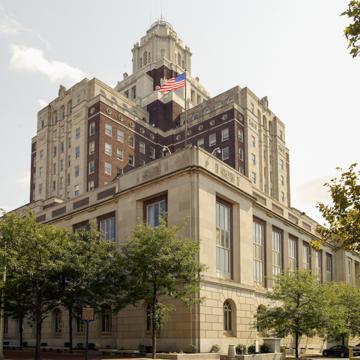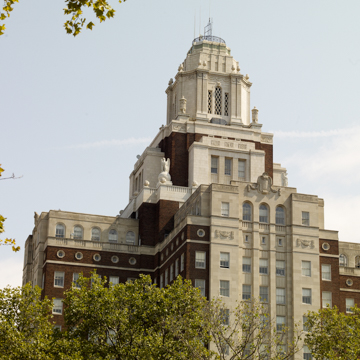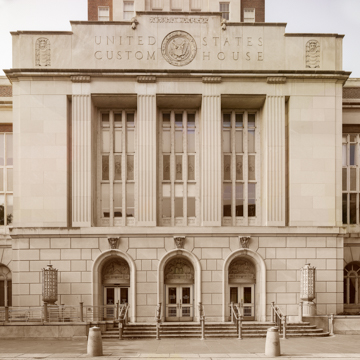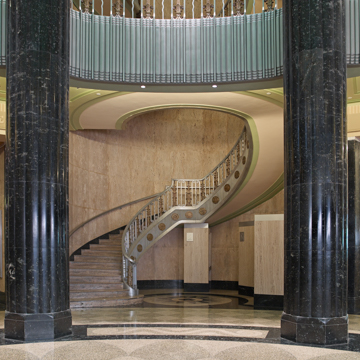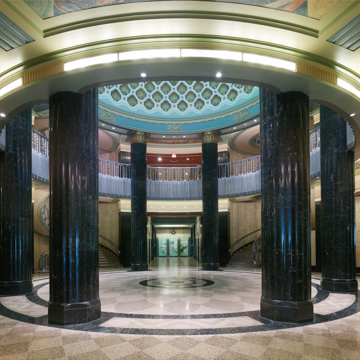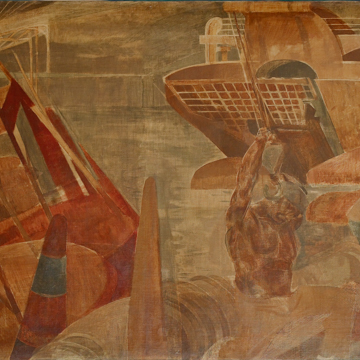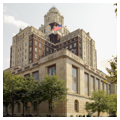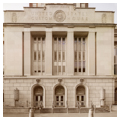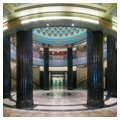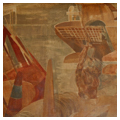Like lower Market Street, lower Chestnut Street was absorbed into the activities of the port in the early nineteenth century, but unlike the rest of the area that turned toward the modern tourist trade, freight brokers, tugboat operators, and customs agents have held their ground so that this district still contains offices of the maritime trades. These offices survive because of their proximity to the Customs House.
The Customs House was designed in the depths of the Great Depression as a WPA project. It is a superbly massed skyscraper by the Philadelphia masters of the Moderne style, with a pilastered limestone base that corresponds to the height—though not the scale—of buildings in the area, while the brick cruciform tower and terra-cotta-clad crown are of an urban scale appropriate to the 1930s. The design was intended to provide the
The interior, particularly the main lobby, is perhaps Philadelphia's best Art Deco space. Aluminum, suddenly economical because of cheap hydro-powered production, ornaments elevators, railings, and the exterior doors and lamps. A great rotunda carried on black marble columns supports a shallow dome and gives the illusion of being located under the great tower. Murals depicting the various government services housed in the building by Brandywine School artist turned modernist George Harding are among the best WPA art works of the city.















